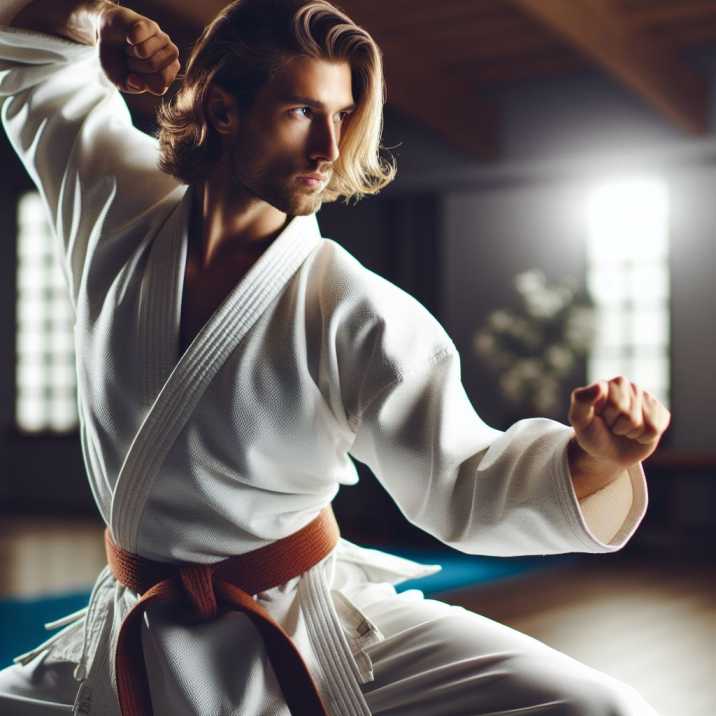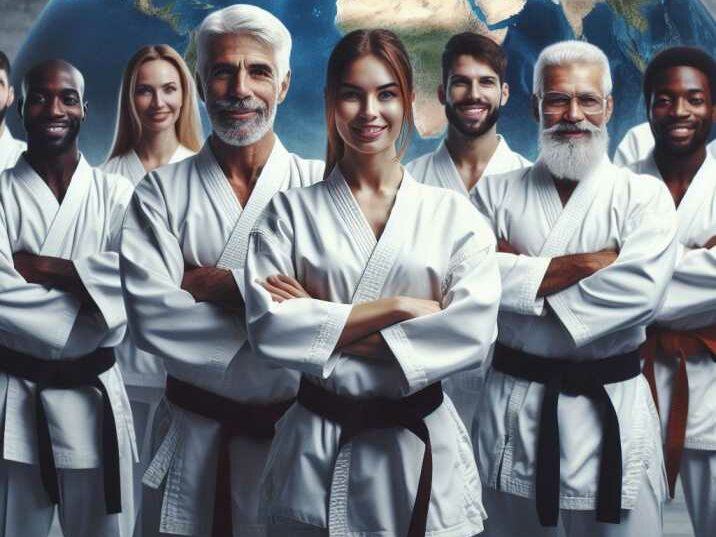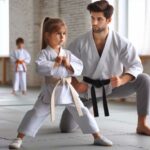What is a Karate Teacher Called? Unveiling the Secrets of Martial Arts Mastery
Introduction
Table of Contents
What is a Karate Teacher Called?
In the realm of martial arts, the journey of a student is often guided by a knowledgeable and experienced mentor. As practitioners progress through the ranks, a common question arises: What is a karate teacher called? This article delves deep into the nuances of martial arts terminology, exploring the role and significance of a karate instructor.

Understanding Martial Arts Pedagogy
Martial arts, with its diverse styles and techniques, is not merely a physical discipline but a holistic way of life. At the heart of this ancient practice lies the relationship between the student and the teacher. Unlike conventional classrooms, martial arts studios have their own unique terminology to denote the guiding figure.
The Traditional Term: Sensei
In the world of karate,what is a karate teacher called? the most widely recognized term for a teacher is “Sensei.” Originating from Japanese, this term translates to “person born before another” and is a mark of respect for one’s instructor. A Sensei is not just a teacher but also a mentor, embodying the principles of discipline, respect, and humility.
Beyond Japanese Martial Arts: Other Titles
While Sensei is predominant in Japanese martial arts, other styles may have distinct titles for their instructors. For instance, in Korean martial arts like Taekwondo , instructors are often referred to as “Sabomnim” or “Kwanjangnim,” depending on their level and role.
The Journey of Becoming a Sensei
To understand the significance of the term “Sensei,” one must grasp the journey martial artists undergo to become instructors. The path to becoming a Sensei involves years of dedicated training, mastery of techniques, and an in-depth understanding of martial philosophy.
Rank and Mastery
In most martial arts, practitioners progress through a system of ranks, signifying their level of proficiency. Attaining the black belt, often associated with expertise, is a crucial milestone on the journey to becoming a Sensei. The higher the rank, the deeper the knowledge and teaching responsibilities.
Teaching Philosophy
Becoming a karate teacher goes beyond demonstrating physical prowess. Senseis are expected to impart not only the technical aspects of the art but also its philosophical underpinnings. This includes values like integrity, perseverance, and a strong sense of ethics.
The Role of a Karate Teacher
A karate teacher, or Sensei, serves multifaceted roles within the martial arts community. Beyond the physical training, they become mentors, motivators, and guardians of tradition.
Mentorship and Guidance
Senseis play a crucial role in the personal development of their students. Through one-on-one interactions and group sessions, they provide guidance on both martial arts skills and life principles. The bond between a Sensei and their students often extends beyond the training studio.
Preserving Tradition
In addition to passing on physical techniques, a Sensei is entrusted with preserving the traditions and cultural aspects of martial arts. This includes rituals, ceremonies, and the philosophical teachings that have been passed down through generations.
The Evolution of Martial Arts Titles
As martial arts spread globally, the terminology used to address instructors has evolved. In some contemporary dojos, especially those outside Japan, the use of the term “Sensei” has become more fluid, and instructors might be addressed by their given names.
Global Influence
The globalization of martial arts has led to an amalgamation of titles and terms. Instructors may be referred to as “Coach,” “Master,” or by their specific title within the martial art style they teach.
Modern Titles: Master, Instructor, Coach
In Westernized dojos, the titles “Master,” “Instructor,” or “Coach” are commonly used. These titles emphasize the role of the teacher as a guide and expert in imparting both physical skills and theoretical knowledge.
The Significance of Respect in Martial Arts
Irrespective of the title used, one common thread unites all martial arts instructors—the importance of respect. The relationship between a student and a teacher is built on a foundation of mutual respect, humility, and dedication.
Bowing as a Symbol of Respect
In many martial arts traditions, both students and instructors begin and end each session with a bow. This simple gesture symbolizes respect and gratitude, acknowledging the knowledge and guidance shared within the dojo.
Conclusion
In conclusion, the question “What is a karate teacher called?” opens a gateway into the rich tapestry of martial arts culture. Whether addressed as “Sensei” in Japanese traditions or by modern titles in Westernized dojos, the role of a karate teacher extends beyond instruction to mentorship and preservation of tradition. As practitioners continue their journey, the bond between student and teacher remains a cornerstone, built on the pillars of respect, dedication, and a shared passion for the martial arts.
As you embark on your own martial arts journey, remember that the path to becoming a karate teacher is not just about acquiring skills; it’s about embodying the spirit of martial arts and passing it on to the next generation.

FAQ Section
Q1: What is the origin of the term “Sensei”?
A1: The term “Sensei” originates from Japanese and translates to “person born before another,” signifying respect for one’s instructor.
Q2: Do all martial arts use the term “Sensei” for instructors?
A2: While “Sensei” is common in Japanese martial arts, other styles may have different titles, such as “Sabomnim” in Taekwondo.
Q3: Can a female karate instructor be called “Sensei”?
A3: Yes, the term “Sensei” is gender-neutral and can be used for both male and female instructors.
Q4: How long does it take to become a karate teacher?
A4: The journey to becoming a karate teacher varies, but it often involves years of dedicated training and achieving a high rank, such as a black belt.
Q5: Are there age restrictions for becoming a karate teacher?
A5: There are no strict age restrictions, but becoming a karate teacher typically requires reaching a certain level of expertise and maturity.
Q6: Can a student become a karate teacher at a lower rank?
A6: While unusual, some martial arts schools may allow experienced students at lower ranks to assist in teaching under the supervision of a higher-ranked instructor.
Q7: What does the title “Sabomnim” mean in Taekwondo?
A7: “Sabomnim” is a Korean term used in Taekwondo, roughly translating to “instructor” or “master.”
Q8: Are there modern titles for karate instructors besides “Sensei”?
A8: Yes, modern titles like “Master,” “Instructor,” and “Coach” are commonly used, especially in Westernized dojos.
Q9: Is there a specific etiquette when addressing a karate teacher?
A9: Yes, addressing a karate teacher with respect, using their title or appropriate honorifics, is considered a key aspect of martial arts etiquette.
Q10: Can a karate teacher train in multiple martial arts styles?
A10: Yes, some instructors choose to diversify their skills by training in multiple martial arts styles.
Q11: What is the significance of bowing in martial arts?
A11: Bowing is a symbolic gesture of respect and gratitude in martial arts, acknowledging the knowledge and guidance shared within the dojo.
Q12: Can a karate teacher also be a student?
A12: Yes, the journey of learning in martial arts is continuous, and many karate teachers continue to train and learn throughout their careers.


